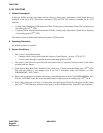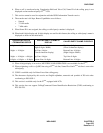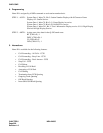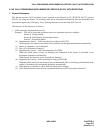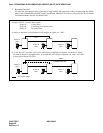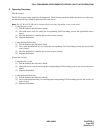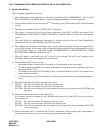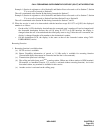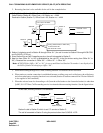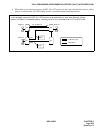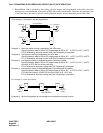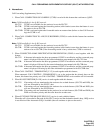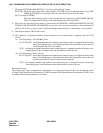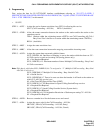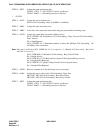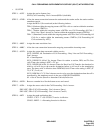
CHAPTER 6 NDA-24305
Page 262
Revision 1.0
CALL FORWARDING SUPPLEMENTARY SERVICE (SS-CF) WITH REROUTING
2. Rerouting function is also available for the call in the example below.
3. When interworking through FCCS link, rerouting function is activated with no restriction.
4. When station-to-station connection is established between a calling party and a called party, the called party
and a forwarded party, rerouting function is not activated (Station-to-station connection in a Fusion Network
is also applied to this condition).
5. When the selected route for forwarding a call (from the called station to the forwarded station) is other than
Q-SIG, IS-11572 line, Call Forwarding service is activated without rerouting function. See the figure below.
Calling Station (Station A): Office Code = 80, Station no. = 1000
Called Station (Station B): Office Code = 82, Station no. = 3000
Destination Station (Station C): Office Code = 83, Station no. = 4000
C.F. is set to “83-4000”
: Q-SIG/IS-11572
: ACIS/CCIS
[routing selection data to Office “83”]
1st choice RT is RT1
2nd choice RT is RT2
Station B
3000
82
Station A
1000
80 81
RT2
RT1
Station C
4000
83
1) Station A originates a call to Station B through Office “81”. (the call is routed to Station B through ACIS/CCIS
and Q-SIG/IS-11572 line).
2) Since Station B is set Call Forwarding service, the call is forwarded to Station C.
3) New line from Office “81” to “83” is established for the call (RT1 is the first choice routing from Office “81” to
“83”). Rerouted line connection is Office “80” → Office “81” → Office “83”.
Note:
ACIS/CCIS line (Office “80” to “81”) is not reestablished and Station COs number is not displayed on
the LCD of Station A belonging to Office “80”.
In this case, rerouting function is not activated.
Station A calls to Station B, which is set C.F. service to Station C.
The call is forwarded to Station C using the protocol other than Q-SIG/IS-11572.
Station A
Q-SIG/
IS-11572
ACIS/CCIS
(2000)
81
Station B (3000)
82
Station C
(4000)
83



